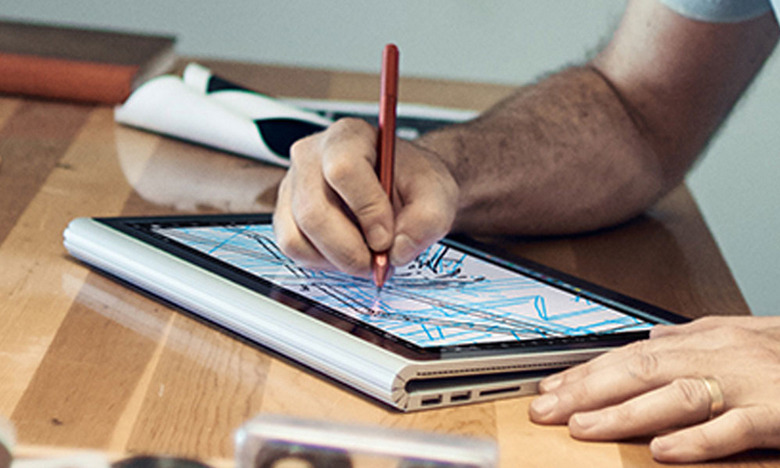Surface Book: How Microsoft Kept The Ultimate Laptop's Best Feature A Secret
PC buyers are actually lining up in front of Microsoft stores around the country for the new Surface devices that went on sale on Monday. The Surface Pro 4 and the Surface Book were announced a few days ago when Microsoft made them available for online preorders. Since then, the Surface Book sold out, and the only option for buying one now is to walk into a Microsoft retail store and pray there's enough stock left.
The Surface Book has been described as the ultimate laptop that Microsoft started working on a couple of years ago although the company did a first-rate job of preventing its coolest features from leaking out before its official unveiling.
DON'T MISS: How to stop Microsoft's relentless Windows 10 upgrade ads from spamming your PC
A new report from Wired shares some of the secrets behind the making of the Surface Book, including details about how Microsoft actually managed to keep the best feature of the laptop a secret — namely, the detachable screen that becomes a Windows 10 tablet when you separate it from its keyboard.
Panos Panay, Microsoft's Corporate Vice President, shared a defining anecdote about the creation of the Surface Book. He woke up one night two years ago and grabbed a Surface Pen and a Surface Mini to email himself thoughts about the ultimate laptop – yes, Microsoft employees apparently used the rumored Surface Mini, even though the company never shipped the device.
In the meetings Panay and his team had at the time, one constant question was how could Microsoft go about making a laptop that's better than anything Apple has to offer.
"How could we possibly feel proud of making the best laptop? [Microsoft's initial laptop version] wasn't reinventing anything."
Working in secret just like Apple's design teams have done for years, Panay's design team ultimately came up with the Surface Book, a powerful, svelte laptop that becomes a tablet.
Initially, the team shelved the Book's final folio design but returned to it the minute they realized the screen was supposed to become a tablet on an as-needed basis. "
To Microsoft's team, the Surface Book was a Surface Pro in reverse. Not a tablet that turns into a laptop when the user wants a laptop experience, but the other way around. Its main purpose is to function as a laptop and only become a "clipboard" when needed.
"Maybe you're an architect, showing blueprints to a client," Wired writes. "Maybe you're a doctor carrying charts. Maybe you're showing off new logo designs. Maybe you just want to read in bed. It would do those things, and well, but not at the expense of being a laptop."
The team then needed to make the product viable. That's how it created the innovative hinge design that prevents the laptop from tilting over. The company then had to find a mechanism that would detach and attach the clipboard seamlessly, without messy actions and clunky sounds. "It's not a transformer," Panay said, so it doesn't need clickety-clack sounds that can be "gimmicky."
The company then "fell in love" with muscle wire, a special kind of alloy that can change shape as it responds to force or electricity, and thus detach and reattach the clipboard to the keyboard dock.
The initial detaching mechanism involved a neat concept: flipping your finger along the finger scoop that you use to lift the lid of the laptop, at which point LEDs would glow indicating the clipboard can be detached. But that was a gimmicky effect too and created plenty of usability worries. And Microsoft replaced it with a simple button, that, when pressed for at least a second (so that you don't press it by mistake), lets you detach the screen. It's so easy a 5-year-old can do it, as Microsoft's tests have shown.
Microsoft's higher-ups had no idea what Panay's team was working on, so when he demoed the Surface Book at an executive retreat, he blew their minds with the laptop design. He then detached the screen, at which point Satya Nadella and the rest of the company's leadership freaked out.
After that Panay decided that he would never show off the "magic trick" to anyone else no matter who was supposed to see Surface Book demos. For meetings with retail partners, Microsoft made prototypes that lacked the detach button and had the function disabled so that the company could keep the hidden feature a secret until it was ready to announce it publicly.
"No matter what demo I do," Panay told his team, "no matter what retail meeting I'm in, no one gets to see it with the top off."
